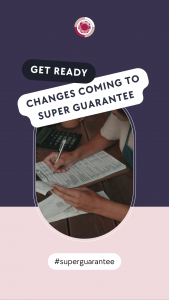Employers not yet reporting additional information under Phase 2 of STP should be getting ready to transition.
Single touch payroll (STP) has now entered into Phase 2, although most employers may not yet be reporting under this phase as many digital service providers (DSP) have obtained deferrals to help get their software ready and help their customers transition.
Essentially, STP works by sending tax and super information from an STP-enabled payroll or accounting solution directly to the ATO when the payroll is run. Entering Phase 2 means that additional information which may not be currently stored in some employers’ payroll systems will need to be reported through the payroll software.
A salient example is the start date of employees. While many newer businesses may have that handy, older businesses may have trouble finding an exact start date, particularly for long-serving employees. In those instances, the ATO notes that a default commencement date of 01/01/1800 can be reported for STP Phase 2 purposes.
Employers will also be required to report either a TFN or an ABN for each payee included in STP Phase 2 reports. Where a TFN is not available for an employee, a TFN exemption code must be used. If a payee is a contractor and employee within the same financial year, both their ABN and TFN must be reported. In addition to reporting TFNs and commencement dates for employees, employers are now also required to report the basis of employment according to work type. That is, whether an individual is Full-time, part-time, Casual, Labour hire, voluntary agreement (contractor with own ABN but in a voluntary agreement with business to bring payments into the PAYG system), death beneficiary, or non-employee (ie, not in the scope of STP but included for voluntary reporting of super liabilities).
The report generated from STP Phase 2 will also include a 6-character tax treatment code for each employee, which is a shortened way of indicating to the ATO how much should be withheld from payments to employees. Most STP solutions will automatically report these codes, but employers should still understand what the codes are to ensure that they are correct. For example, RTSXXX refers to regular (R) employees with a tax-free threshold (T), who have study and training support loans (S), who have not asked for a variation of the amount withheld due to Medicare levy surcharge (X) or Medicare levy exemption (X), or Medicare levy reduction (X).
The income and allowance details attributed to employees will also be further drilled down in Phase 2. For example, instead of reporting a single gross amount of income, employers need to separately report on gross, paid leave, allowances, overtime, bonuses, directors’ fees, return to work payment (lump sum W) and salary sacrifice amounts.
While STP Phase 2 commenced on 1 January 2022, most DSPs have obtained deferrals which cover their customers. This means that if your DSP has a deferral in place, you do not need to apply for your own deferral and will only need to start reporting Phase 2 information from your next pay run after your DSP’s deferral expires. However, if your business needs more time in addition to your DSP’s deferral, you can apply for your own deferral online.
If you’re unsure about your personal or business situation and would like some support and guidance, please reach out. Email reception@garnetaccounting.com.au or click to book an appointment below.

Changes are coming to the Super Guarantee.
From 1 July 2022, the minimum threshold at which an employer has to pay super under the super guarantee scheme will be removed. Will you be affected as an employer or as an employee?
In Australia, it is estimated that around 300,000 young, part-time, mostly female workers currently and legally do not receive super contributions from their employers under the super guarantee scheme. This is due to their before tax earnings per month falling below the minimum $450 threshold for making contributions.
All this is set to change from 1 July 2022, when the minimum threshold will be scrapped.
This means that low-income earners currently under the threshold will finally have a chance to build their super for retirement.
Read the article by heading to our website or via the link in bio
https://www.garnetaccounting.com.au/super-guarantee-minimum-threshold-removed/

